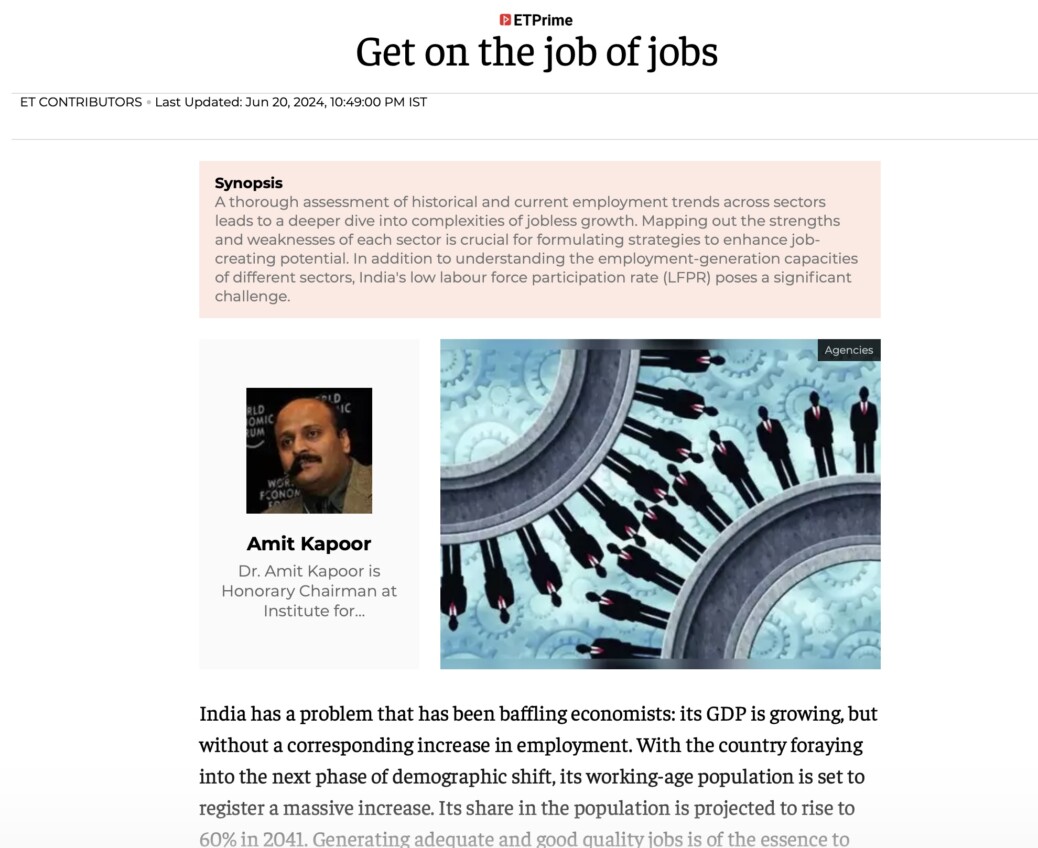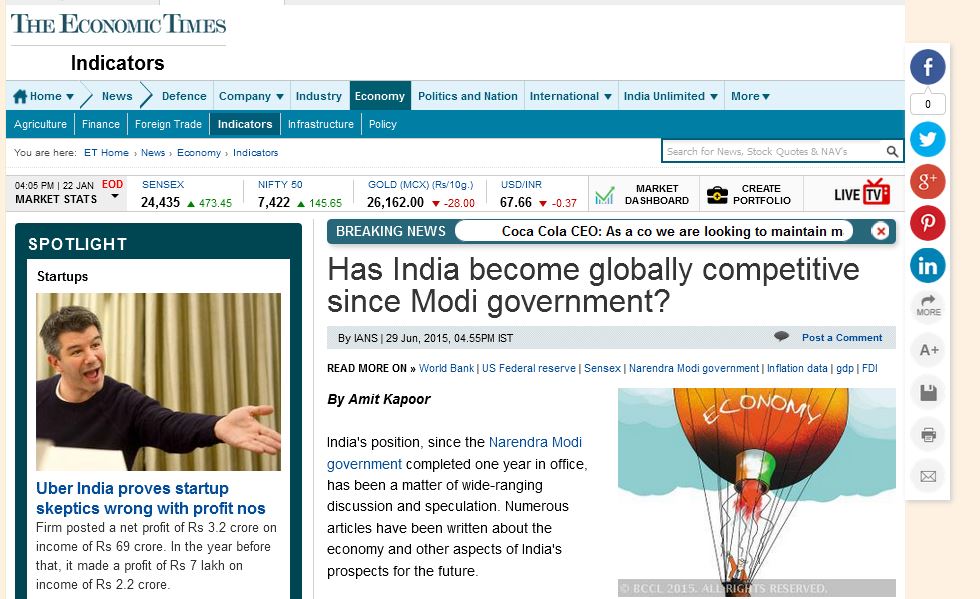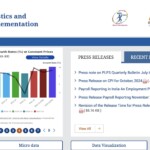The Employment Dilemma: India’s Struggle with Jobless Growth
By Amit Kapoor
India, one of the fastest growing economies in the world, harbours a conundrum that has been baffling economists for a long time: GDP growth without a corresponding increase in employment. The phenomenon of jobless growth has become a significant concern for India. With the country foraying into the next phase of demographic shift, the working-age population is set to register a massive increase in the coming years. Its share in the overall population is projected to rise to approximately 60% in 2041. Jobless growth reflects a disconnect between employment and economic expansion. Generating adequate and good quality jobs is of the essence to keep pace with the burgeoning youth population. Why does economic growth not translate into jobs? The answer to this question lies in multiple intertwined factors. Capital-intensive development causes a reduced requirement for human labour, the inability of certain sectors to absorb displaced workers, and skills mismatch, among others. An ILO report highlights joblessness in the highly educated youth pool, associating it with an unwillingness to avail under-remunerated jobs and aspirations for better job prospects. Yet another crucial factor that may be driving jobless growth is the service sector’s limited scope to create as many jobs as other arenas, such as manufacturing and agriculture. Understanding the dynamics of jobless growth is crucial for addressing this persistent issue and ensuring sustainable development. A thorough assessment of historical and current employment trends across various economic sectors would lead to a deeper dive into the complexities of India’s jobless growth phenomenon. Mapping out the strengths and weaknesses of each sector is crucial for formulating effective strategies to enhance their job-creating potential. In addition to understanding the employment generation capacities of different sectors, India’s low labour force participation rates pose a significant challenge. Why has India struggled to create jobs for a large portion of its labour force, particularly for women and less skilled workers? Various factors hinder greater participation, and unravelling the complexities of jobless growth involves examining these issues in detail.
Even though the unemployment rate fell to 3.1% in 2022-23, marking a steady decline from 6% in 2017-18, the unemployment rate among the educated remains a worrisome trend. According to the Periodic Labour Force Survey (PLFS) 2022-23, the unemployment rate is highest among graduates at 13.4%. The unemployment rate for those with diplomas was recorded at 12.2%, closely followed by a 12.1% unemployment rate for postgraduates. Conversely, the unemployment rate was lowest at comparatively lower levels of education, even reaching zero for the illiterate population. The unemployment rate was 7.3% for those with secondary education and above. Rising unemployment across higher education levels has been consistent with past trends. For instance, the unemployment rate among graduates was 14.9% in 2021-22, while it was 8.6% for those with secondary education and above. In 2020-21, the unemployment rate for graduates was 15.5%, and 9.1% for those with secondary education and above. The unemployment rate among young persons (15-29 years) in the last three years (2020-23) has been between 12.9% and 10%, with the highest rate of unemployment amongst urban females (above 20% throughout the three years). A fall in the total unemployment rate for persons aged 15 years above was accompanied by a rising share of the self-employed sector, indicating that even when more jobs are created, they are concentrated in the informal sector, implying job insecurity and poor working conditions. Many job seekers, particularly young graduates, are reluctant to accept low-paying jobs in unstable environments that are currently available.
The recent ILO study on India’s employment trends revealed that employment growth in the country remained stagnant until 2019. According to the study, while India’s employment rate grew at an annual average of 1.6% from 2000 to 2012, the Gross Value Added (GVA) increased by 6.2% during the same period. However, between 2012 and 2019, employment growth was minimal despite a GVA growth of 6.7%. Additionally, labour mobilization in India has been low. The slow sectoral shift from agriculture to industry, particularly in terms of employment, has been identified as a structural issue. Looking at sectoral transformation between agriculture, industry and service, the KLEMS database tells us that the agriculture sector continues to employ more than 45% of the workforce but contributes less than 20% in value-added. On the other hand, services account for more than 50% of value-added but only 30% of all jobs. While large firms have driven overall productivity, they have not significantly contributed to job creation, resulting in many workers being employed by small firms with limited growth opportunities.
The quest to rewrite the ‘jobless growth’ story has been a pivotal pursuit of successive governments. In the journey towards becoming a global economic powerhouse, the need for competitive job opportunities in India cannot be overstated. A thorough analysis of data reveals that India needs to pursue job creation opportunities across a portfolio of service and industrial sectors. It is also critical to understand the varying needs of different sections of the population. On the one hand, we need more entry-level opportunities as well as reduce barriers for those currently outside the active labour force, particularly low-skilled workers and women. This is critical to bring more workforce under formal sectors of employment. On the other hand, a second set of policies should target the creation of higher-productivity roles that capitalize on current and emerging competitive advantages in India. This will play a crucial role in attaining greater and shared prosperity in the future. India is home to one of the youngest populations in the world, with a median age of just 28 years. While this demographic dividend presents immense potential, it also poses significant challenges, particularly in terms of employment generation. With more and more youth poised to enter the workforce, restructuring the educational system is critical to align skills and capabilities with the evolving needs of a dynamic market. As India continues to chart its course in the 21st century, unlocking the potential of its workforce through competitive job opportunities will be key to realizing the aspirations of millions and a catalyst for inclusive and prosperous growth.
Contributors: Reserach team – Jessica Duggal, Meenakshi Ajith, Shivani Kowadkar
The article was published with Economic Times (Print) on June 20, 2024.























